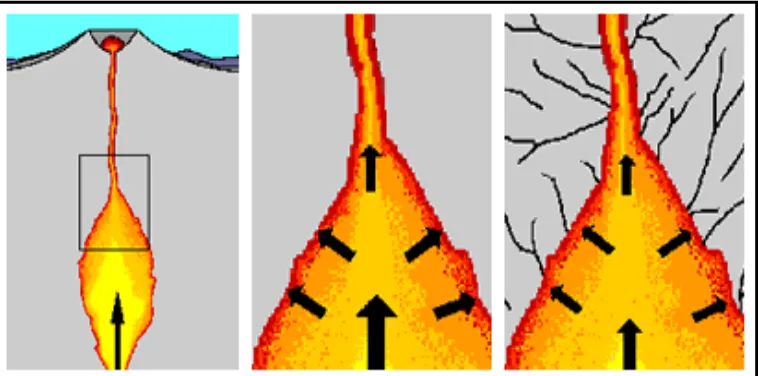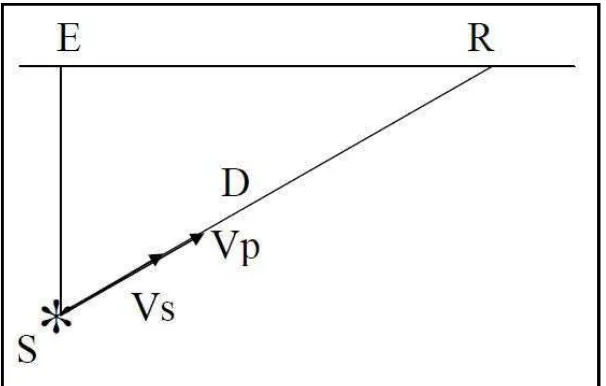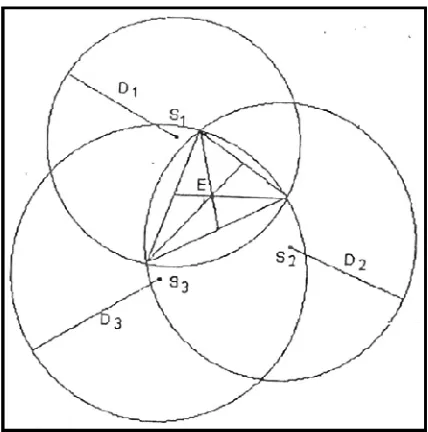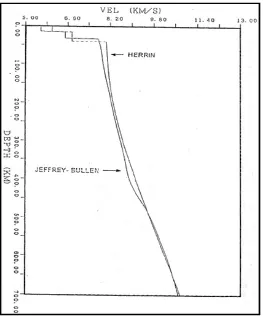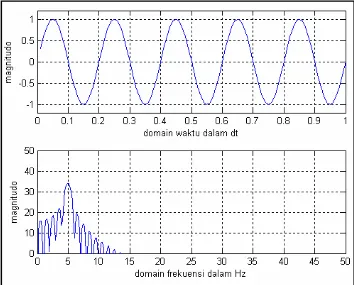Informasi Dokumen
- Penulis:
- Rianza Julian
- Sekolah: Universitas Lampung
- Mata Pelajaran: Teknik Geofisika
- Topik: Studi Gelombang Seismik Gempa Vulkanik Gunung Sinabung Untuk Menentukan Karakteristik Mekanisme Vulkanik
- Tipe: Skripsi
- Tahun: 2013
- Kota: Lampung
Ringkasan Dokumen
I. INTRODUCTION
The introduction outlines the importance of studying volcanic behavior to determine the characteristics of the volcano, which can aid in disaster early warning systems. It emphasizes the use of seismic data to monitor volcanic earthquakes, highlighting the differences between volcanic and tectonic earthquakes. The section explains how dynamic fluid processes within the magma can generate seismic waves, indicating potential volcanic eruptions. This foundational knowledge is critical for students in geophysics, as it links theoretical concepts to practical applications in disaster management.
1.1. Background
This subsection elaborates on the significance of understanding volcanic activity, particularly in the context of disaster preparedness. By utilizing seismic data, researchers can identify patterns that may precede eruptions, thereby enhancing public safety. The academic value lies in its application of geophysical principles to real-world scenarios, making it a vital area of study for students pursuing careers in geophysics and environmental science.
1.2. Research Objectives
The objectives of this research are clearly defined, focusing on locating earthquake hypocenters, analyzing frequency ranges, determining average station speeds, and understanding volcanic mechanisms. This structured approach provides students with a clear framework for conducting scientific research, reinforcing the importance of methodical investigation in geophysical studies.
1.3. Problem Limitations
This section outlines the limitations of the study, including the timeframe of data collection and the specific focus on volcanic earthquakes recorded by permanent stations. Such limitations teach students to critically assess the scope of their research, emphasizing the importance of defining boundaries in scientific inquiry.
II. LITERATURE REVIEW
The literature review provides essential context for the research by discussing the geological and morphological characteristics of Mount Sinabung. It includes details about the location, geological history, and the types of volcanic eruptions associated with the volcano. This section is crucial for students as it integrates theoretical knowledge with field data, illustrating how geological principles apply to specific case studies in volcanology.
2.1. Research Location
This subsection describes the geographical and geological features of Mount Sinabung, emphasizing its stratovolcano classification. Understanding the physical characteristics of the volcano is essential for students, as it lays the groundwork for analyzing seismic activity and eruption patterns.
2.2. Geology of Mount Sinabung
The geological history of Mount Sinabung is discussed, including its eruptive history and the types of materials produced during eruptions. This knowledge is vital for students as it connects geological processes to observable phenomena, enhancing their comprehension of volcanic systems.
2.3. Morphology of Volcanoes
This subsection categorizes different types of volcanoes based on their morphology and eruption styles. By studying these classifications, students gain insight into the diversity of volcanic structures and the factors influencing their formation, which is crucial for understanding volcanic hazards.
III. BASIC THEORIES
This section delves into the fundamental theories related to seismic waves and volcanic activity. It covers various types of seismic waves, their propagation, and the relationship between volcanic activity and seismic events. The academic value of this section lies in its detailed exploration of theoretical concepts that underpin practical applications in volcanology and seismology.
3.1. Seismic Waves
The section defines seismic waves and categorizes them into body waves and surface waves. Understanding these concepts is essential for students as it forms the basis for analyzing seismic data and interpreting volcanic activity.
3.2. Types of Earthquakes
This subsection distinguishes between tectonic and volcanic earthquakes, explaining their causes and characteristics. This differentiation is critical for students to understand the specific dynamics of volcanic seismicity and its implications for monitoring volcanic eruptions.
3.3. Relationship Between Volcanic Activity and Earthquakes
The relationship between volcanic activity and seismic events is explored, highlighting how magma movement triggers earthquakes. This knowledge is vital for students as it illustrates the interconnectedness of geological processes and the importance of monitoring seismic activity as a precursor to eruptions.
3.4. Monitoring Volcanic Seismicity
This subsection discusses the methods used to monitor volcanic seismicity, emphasizing the importance of seismic networks. Students learn about the tools and techniques used in real-time monitoring, which is crucial for early warning systems.
3.5. Classification of Volcanic Earthquakes
The classification of volcanic earthquakes based on waveform and frequency is presented. This classification helps students understand the different types of seismic signals associated with volcanic activity, aiding in the interpretation of seismic data.
3.6. Determining Hypocenter and Epicenter
This subsection explains the methods for determining the hypocenter and epicenter of earthquakes. Understanding these concepts is essential for students as they form the basis for analyzing seismic events and assessing volcanic hazards.
3.7. Travel Time Curve
The travel time curve is introduced as a tool for analyzing seismic wave propagation. Students learn how to use this curve to determine the location of seismic events, which is critical for effective monitoring and response strategies.
3.8. Natural Frequency
This subsection discusses the concept of natural frequency and its relevance to seismic studies. Students gain insight into how different materials respond to seismic waves, which is important for understanding building resilience against earthquakes.
3.9. Fourier Transform
The Fourier Transform is introduced as a mathematical tool for analyzing seismic signals. This section provides students with the skills to process and interpret seismic data, enhancing their analytical capabilities in geophysical research.
IV. RESEARCH METHODOLOGY
The methodology section outlines the research design, data collection methods, and analytical techniques used in the study. It emphasizes the importance of a systematic approach to research, providing students with a clear understanding of how to conduct scientific investigations in geophysics.
4.1. Research Location
This subsection describes the specific locations where data was collected, providing context for the research. Understanding the research environment is crucial for students as it influences data interpretation and analysis.
4.2. Equipment and Materials
The equipment and materials used in the study are detailed, emphasizing the importance of proper tools in scientific research. Students learn about the technological aspects of data collection, which is essential for conducting accurate measurements.
4.3. Research Data
This subsection outlines the types of data collected during the study, including seismic recordings. Understanding data types is vital for students as it affects the analysis and conclusions drawn from research.
4.4. Data Processing
The methods used for processing the collected data are described, highlighting the importance of data analysis in scientific research. Students learn about the techniques necessary for interpreting seismic data, which is critical for understanding volcanic activity.
4.5. Results of Data Processing
This subsection presents the results obtained from data processing, providing insights into the findings of the study. Students learn how to interpret and present research results, which is essential for academic communication.
4.6. Flow Diagram
A flow diagram illustrating the research process is included, providing a visual representation of the methodology. This aids students in understanding the sequential steps involved in conducting research, reinforcing the importance of organization in scientific inquiry.
V. OBSERVATIONS AND DISCUSSION
This section presents the findings of the research and discusses their implications. It emphasizes the significance of understanding seismic data in the context of volcanic activity, providing students with insights into the practical applications of their studies.
5.1. Distribution of Hypocenters and Volcanic Mechanisms
The distribution of earthquake hypocenters is analyzed, providing insights into volcanic mechanisms. Students learn how to interpret seismic data to identify patterns that may indicate potential eruptions, which is crucial for disaster preparedness.
5.2. Wave Path Trajectory
This subsection discusses the trajectory of seismic waves, highlighting how they propagate through different geological structures. Understanding wave paths is essential for students as it influences the interpretation of seismic data and volcanic activity.
5.3. Determining Travel Time Curve
The determination of travel time curves is presented, illustrating how they are used to analyze seismic data. This knowledge is vital for students as it enhances their analytical skills in geophysical research.
5.4. Frequency Characteristic Analysis
This subsection focuses on the analysis of frequency characteristics of volcanic earthquakes, providing insights into the behavior of seismic signals. Students learn how to interpret frequency data, which is critical for understanding volcanic activity.
VI. CONCLUSION AND RECOMMENDATIONS
The conclusion summarizes the key findings of the research and offers recommendations for future studies. It emphasizes the importance of ongoing research in understanding volcanic activity and its implications for disaster management, providing students with a framework for future inquiry.
6.1. Conclusion
The conclusion synthesizes the findings of the research, highlighting the significance of seismic monitoring in predicting volcanic eruptions. This reinforces the academic value of the study, demonstrating the practical applications of geophysical research.
6.2. Recommendations
This subsection offers recommendations for future research, emphasizing the need for continued monitoring and data collection. Students learn the importance of ongoing inquiry in scientific research, which is essential for advancing knowledge in the field.
VII.REFERENCES
The references section lists the academic sources cited throughout the research, providing students with a resource for further reading and study. Understanding the importance of citing sources is critical for academic integrity and scholarly communication.
VIII.APPENDIX
The appendix includes supplementary materials that support the research findings, such as additional data tables and figures. This section is valuable for students as it provides a comprehensive view of the research, enhancing their understanding of the study's context and implications.

